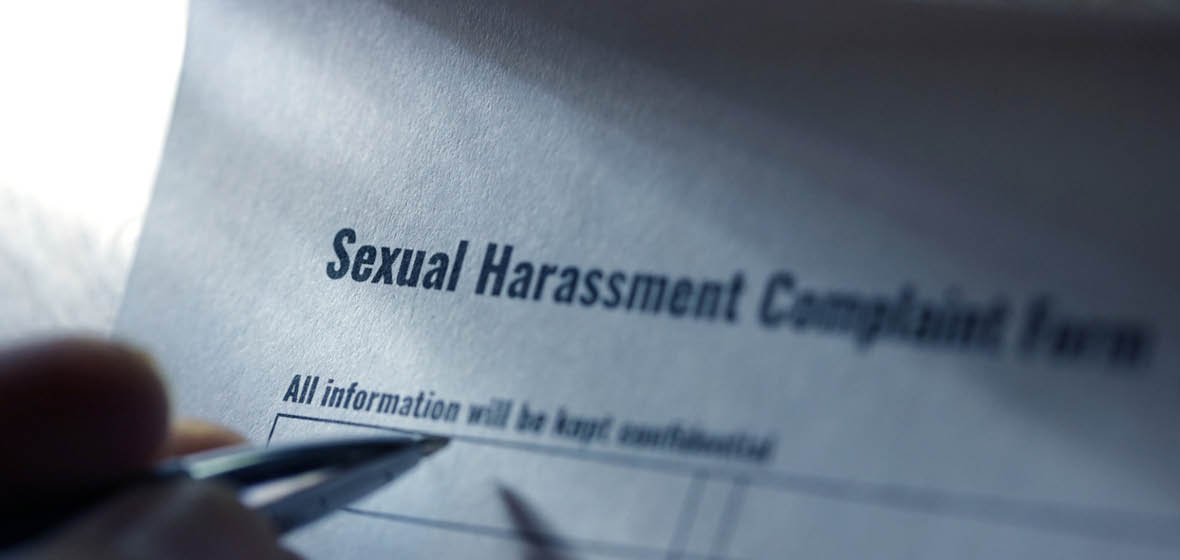It is the institution that should apologise for its failings. Nothing will change unless the profession acknowledges that we have failed those lawyers who trusted us to make their workplaces safe. We owe it to the women and men who put up their hands in the lecture theatre to show them we can do better.
The legal profession has been calling “time’s up” on sexual harassment at work for many years; human rights barrister KATE EASTMAN SC has made a career out of it. She says the rot will continue until we can collectively change our approach.
In May 2018, I participated in a panel discussion about sexual harassment in the legal profession as part of the 2018 Intervarsity Gender and the Law Summit organised by women law students in Sydney. I started by asking the audience of about 100 women and three men in the room the following question: “Who in the room thinks they may be sexually harassed within the first five years in practice?” About two thirds of the women raised their hands. I then asked, “Who thinks they will know a person who will be sexually harassed?” All of the men and about 90 per cent of the women raised their hands.
I was surprised. But most of all I felt ashamed. Was this the best our profession could offer talented, hardworking, and hopeful law students?
On 22 June 2020, Chief Justice Kiefel released a statement announcing that the High Court was advised in 2019 of allegations of sexual harassment, and an investigation had found six former Court staff members were harassed by a former Justice, Dyson Heydon.
The Chief Justice said: “The findings are of extreme concern to me, my fellow Justices, our Chief Executive and the staff of the Court. We’re ashamed that this could have happened at the High Court of Australia.”
Shame is a strong word and evokes strong emotions. One researcher, Dr Donald Nathanson, says the experience of shame is initially physiologic – involving a cortical shock that momentarily halts higher cognitive function. This may invoke the initial “freeze” response that many women victims speak about. Shame impels hiding, while defences against it include anger, humour, silence, and a wide range of behaviours.
This is what victims of sexual harassment suffer. It is not uncommon for intelligent, diligent and loyal women lawyers to question what they did to cause or invite the sexual harassment. Most feel that doing anything about the harassment will cause them to be further shamed before their colleagues, employer and community. The shame corrodes their confidence and their faith in legal systems. Women who do take action are labelled “complainants” and face further shame in having to recount and prove that they were sexually harassed in investigations.
 Kate Eastman SC
Kate Eastman SC
For almost 30 years, I have been involved in hundreds of claims of sexual harassment. Shame and fear is pervasive.
Indeed, shame is openly discussed and used as a strategic weapon. It is not uncommon to hear calls for “naming and shaming”, or threatening to “cause reputational or brand damage”. Responding to allegations of sexual harassment by using and perpetuating shame is one of the fundamental reasons we have been unable to change the culture. Dr Nathanson says competence in treating the victims of sexual abuse and exploitation requires an understanding of shame, the complex and multilayered emotion triggered when we have been exposed or when our self-esteem has been reduced. There are not enough lawyers who have the unique skills to address sexual harassment claims with a trauma-informed approach.
Since the early 1990s, the New South Wales legal profession has discussed and debated how to address sexual harassment. In the early 1990s, we debated whether sex discrimination and/or sexual harassment should be governed by the Sex Discrimination Act, the NSW Anti-Discrimination Act, or professional conduct rules. In 1994, Regulation 69B of the Legal Profession Regulation 1994 (NSW) was introduced. It provided that:
A legal practitioner must not, in connection with the practice of law, engage in any conduct, whether consisting of an act or omission, that constitutes unlawful discrimination (including unlawful sexual harassment) under the Anti Discrimination Act 1977 against any person.
There were various iterations of this rule in the following 16 years. The reality is that there has been little change in 25 years in the prevalence of sexual harassment in the legal profession, notwithstanding there are significantly more women in the profession.
For many years, we had compulsory ongoing education addressing sexual harassment and equal opportunity. I presented these CPDs on an annual basis over a 15-year period, and it was not uncommon to see male members of the audience reading the newspaper or talking to their colleagues.
At one seminar, a male lawyer in the front row proudly announced that he would “love to be sexually harassed”. After another seminar, I was described as a “left-wing, feminist ideologue” for presenting an overview of the relevant laws.
The legal profession’s response to the revelations in June that sexual harassment occurred at the High Court highlights how ill-equipped we are to address sexual harassment in our profession. We are scrambling to respond and explain how this could have happened. We want to know “who knew?” but we don’t ask “why?”
For women lawyers who have experienced sexual harassment in the past and remained silent, these revelations have been a trigger. The shame has again risen to the surface and they fear their secrets may be exposed. Other women worry that nothing will happen in response to the revelations and it will only serve to reinforce the risks of reporting sexual harassment.
The responses of the men have been different. One male senior counsel said, “Why haven’t women complained about this stuff, it’s a disgrace!” He revealed his lack of understanding about the trauma experienced by victims of sexual harassment and reinforced the notion that it is up to a victim of harassment to be the person to do something about it. Other male lawyers want to “rescue” women and “fix” the problem for them. However, with few exceptions, the male lawyers are not asking how to “fix” male lawyers or whether men need to change. While women lawyers have come together to again make suggestions and share ideas, I do not hear about groups of men convening to discuss a male response or examining why sexual harassment occurs. Perhaps because those men have not experienced the shame of being sexually harassed. The “problem” remains the women’s problem and women’s responsibility to fix.
So, back to the Chief Justice’s statement of 22 June 2020. It should be mandatory reading for the entire profession. In her carefully considered words, the Chief Justice affirms that it is not the victims of sexual harassment who should feel shame: it is the institution that has failed to provide a safe working environment. It is the institution that should apologise for its failings. The institution is not only the High Court – rather, it is emblematic of the entire legal profession.
Nothing will change unless the profession acknowledges that we have failed those lawyers who trusted us to make their workplaces safe. We owe it to the women and men who put up their hands in the lecture theatre to show them we can do better.




